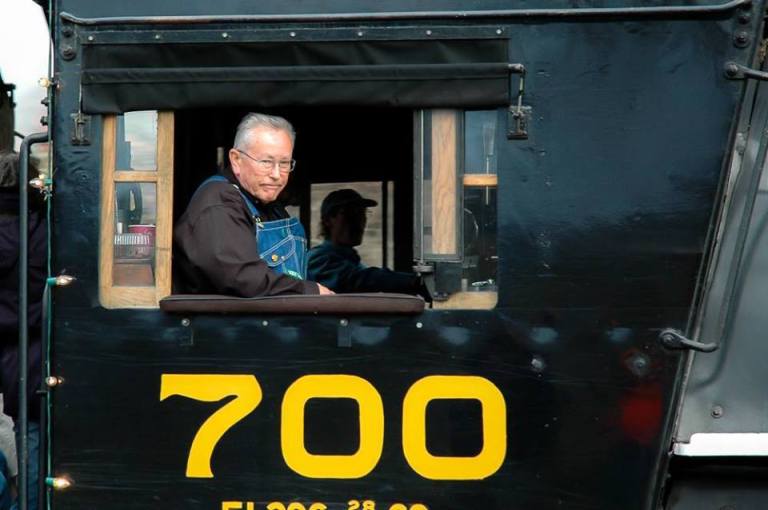 On Wednesday, February 21st, the Pacific Railroad Preservation Association lost Senior Engineer Greg Kamholz to pancreatic cancer.
On Wednesday, February 21st, the Pacific Railroad Preservation Association lost Senior Engineer Greg Kamholz to pancreatic cancer.
Greg was one of the primary engineers running the SP&S 700 since it’s return to steam in the 1990’s. Not only was he a primary engineer for the engine, he was also one of our most knowledgeable steam experts. His passing is a great loss not only for the PRPA but also for the steam community as well.
With his passing, a wealth of irreplaceable steam knowledge has been lost. He cut his teeth on steam when still a teenager and has run myriad engines over the years.
Also, Greg is a co-author of the book “The Oregon American Lumber Company: Ain’t No More,” a book about a logging railroad for which he did extensive research.
A professional railroader for over 50 years, Greg ran trains first with the Spokane, Portland, and Seattle railroad (SP&S) and then for the Burlington Northern Railroad after it was formed by the merger of the SP&S and three other railroads. He then continued his railroad career through the Burlington Northern and Santa Fe merger as well.
Greg was the last SP&S alumni working for the BNSF, and he was somewhat of a legend among local BNSF employees because of his involvement with steam and his many years as a railroad engineer.
More importantly, and beyond his contribution to the PRPA as a steam expert, Greg was also a friend and mentor to everyone involved with the restoration, maintenance, and operation of the SP&S 700.
Here is the Eulogy written by his brother, that was read tonight (3/19/2018) at the Celebration of Life service held for him at the Oregon Rail Heritage Center in Portland, Oregon.
~~~~~~~~~~~~~~~~~~~~~~~~~~~~~~~~~~~~~~~~~~~~~~~~~~~~~~